France, early to mid-18th century.
Measurements: 6.2 × 5.1 cm.
Weight: 8.7 grams.
Materials: Silver, pastes with painted black dot centres.
This finely worked French pendant is composed in the form of a cross, its structure defined by four hemispherical silver bosses arranged in cruciform, each bezel-set with a circular faceted paste stone and flanked by radiating foliate or fleur-de-lys style scrolls. The bosses are joined by scrolled and stepped elements forming a distinctive architectural framework. A large pear-shaped pendant drop is suspended from the lower arm of the cross, also set with a faceted paste and three lobed terminals, echoing the ornament of the upper structure. The reverse is closed and plain, exhibiting hand-hammered shaping typical of 18th-century provincial silverwork. One of the small paste stones at the top of the pendant is missing. A French ET duty mark is struck to the reverse, indicating tax control on silver during the late 18th to early 19th century.
The form is characteristic of the so-called Croix de Saint-Lô, a regional type named after the town of Saint-Lô in Normandy. These crosses were traditionally worn as devotional or bridal jewels and are notable for their bold, symmetrical compositions and use of foiled or dotted pastes to mimic diamond jewellery. Their production flourished in northern France during the 18th century, often as part of regional costume jewellery associated with Catholic traditions and rites of passage.
Provenance:
By descent in the collection of the Earls of Home at The Hirsel, Berwickshire.



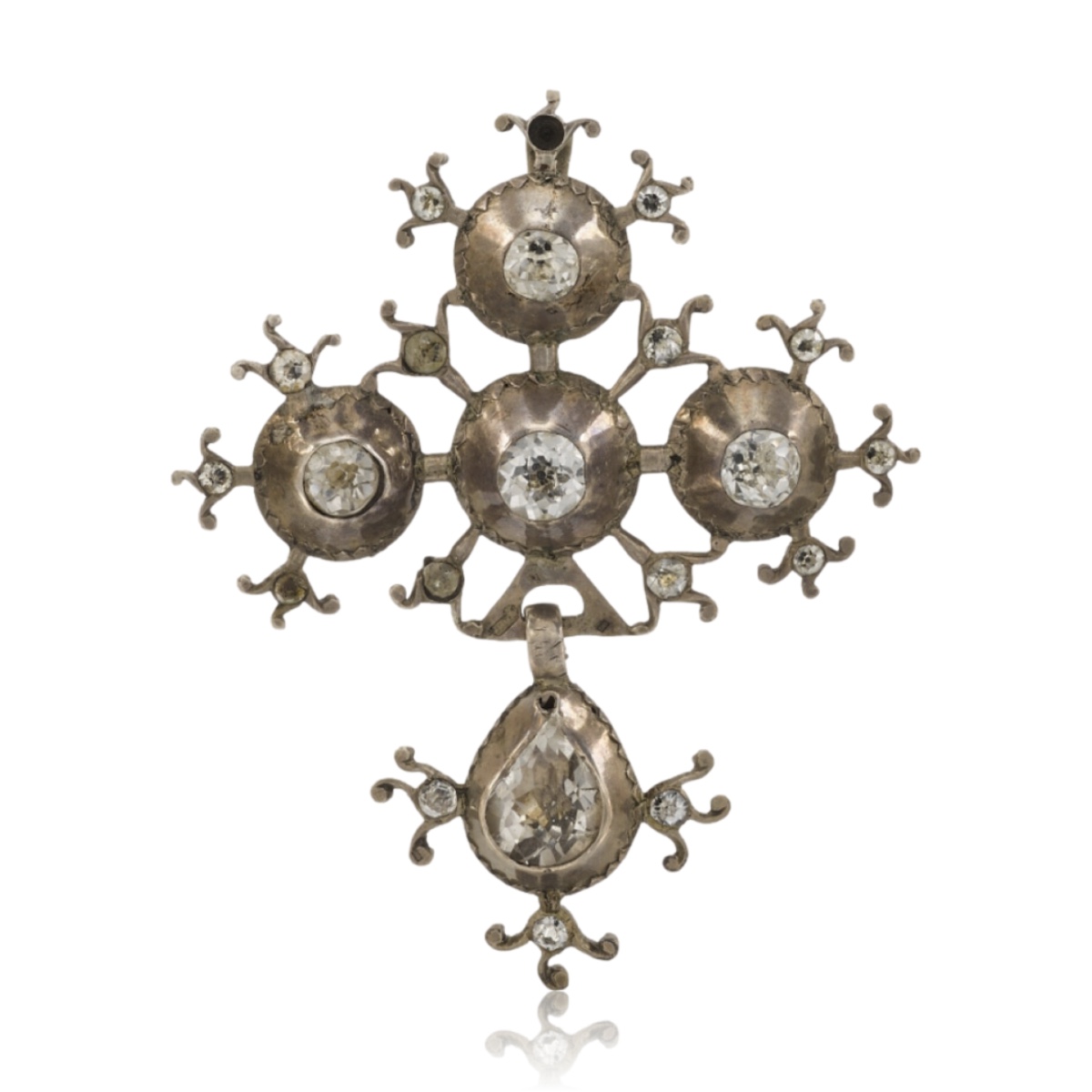
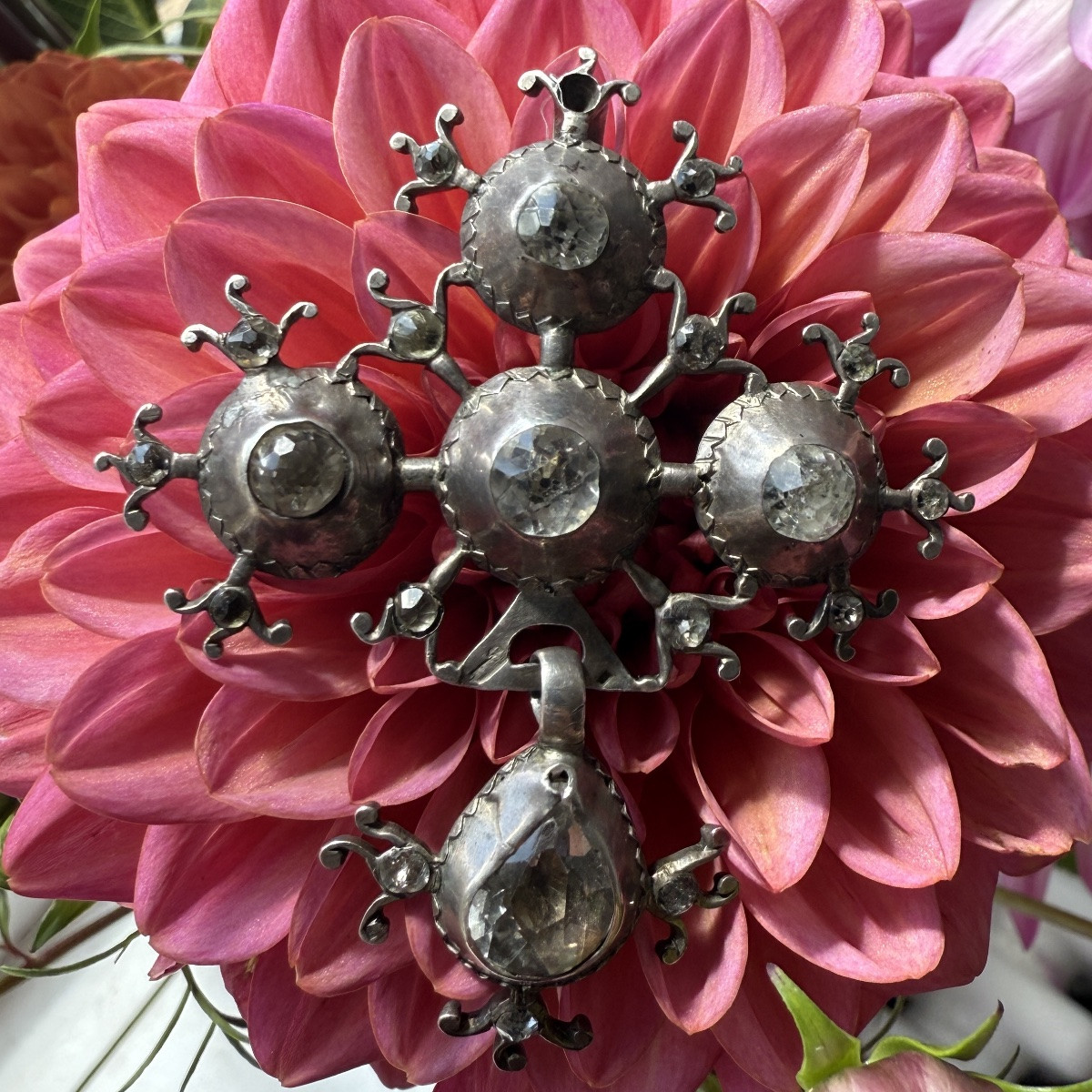
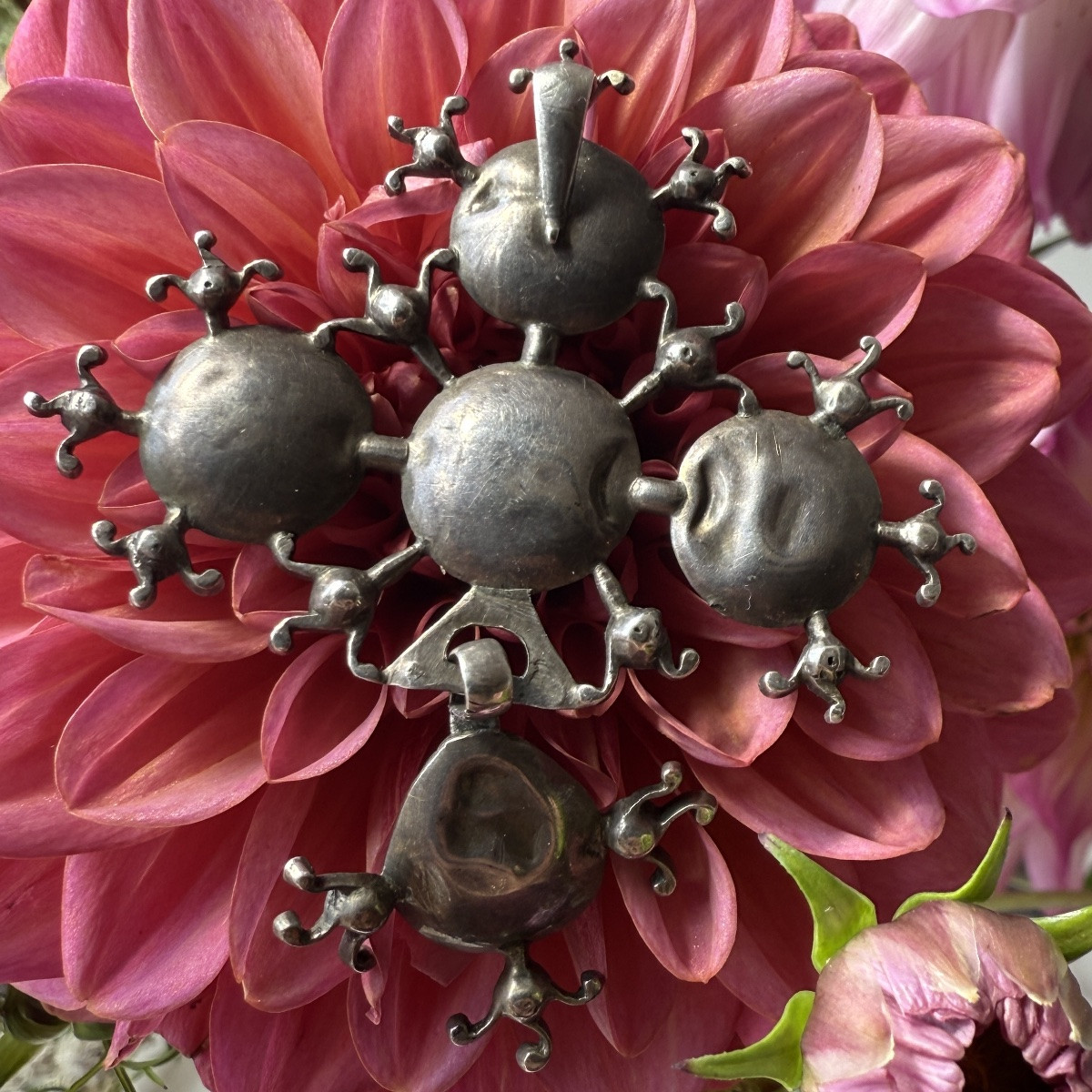
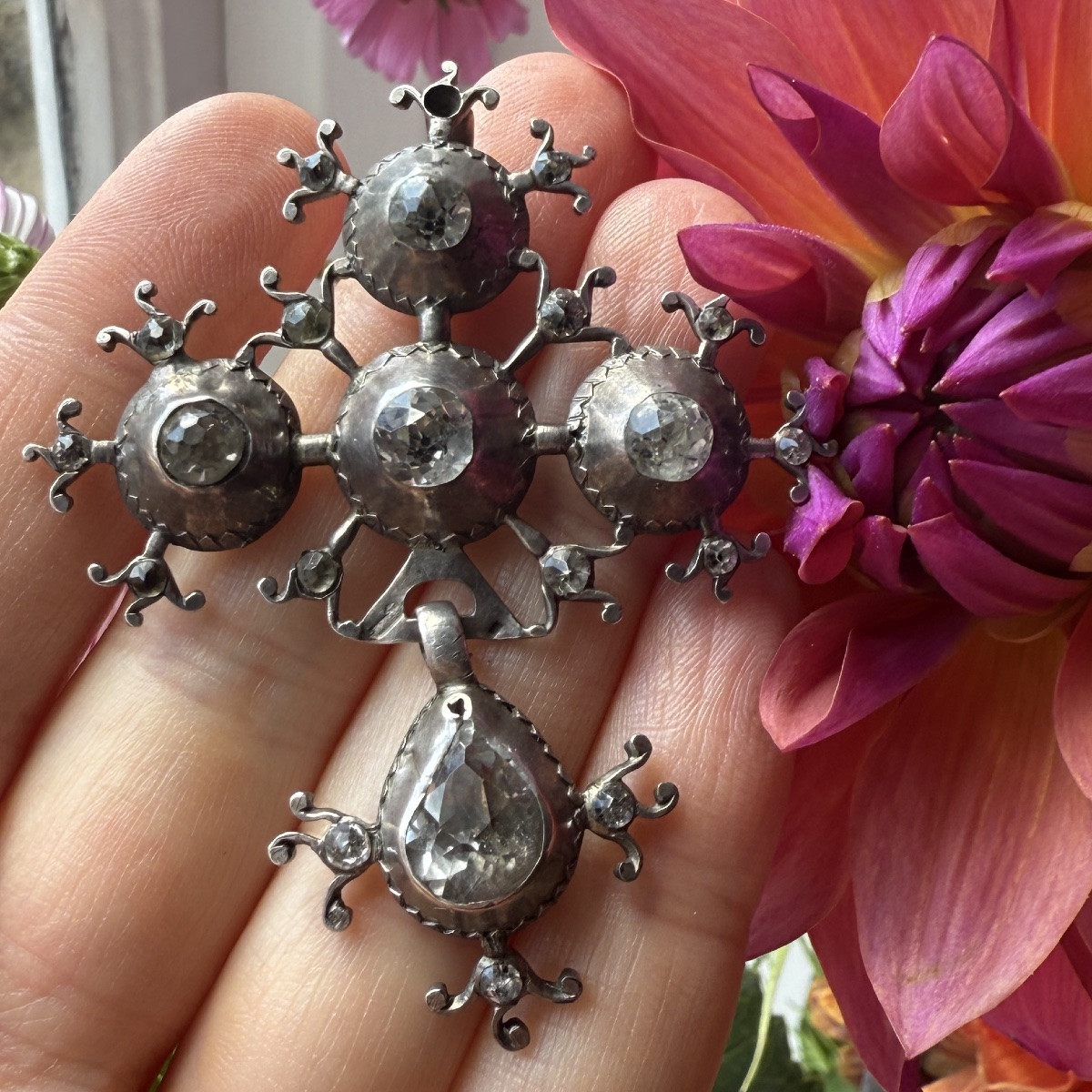
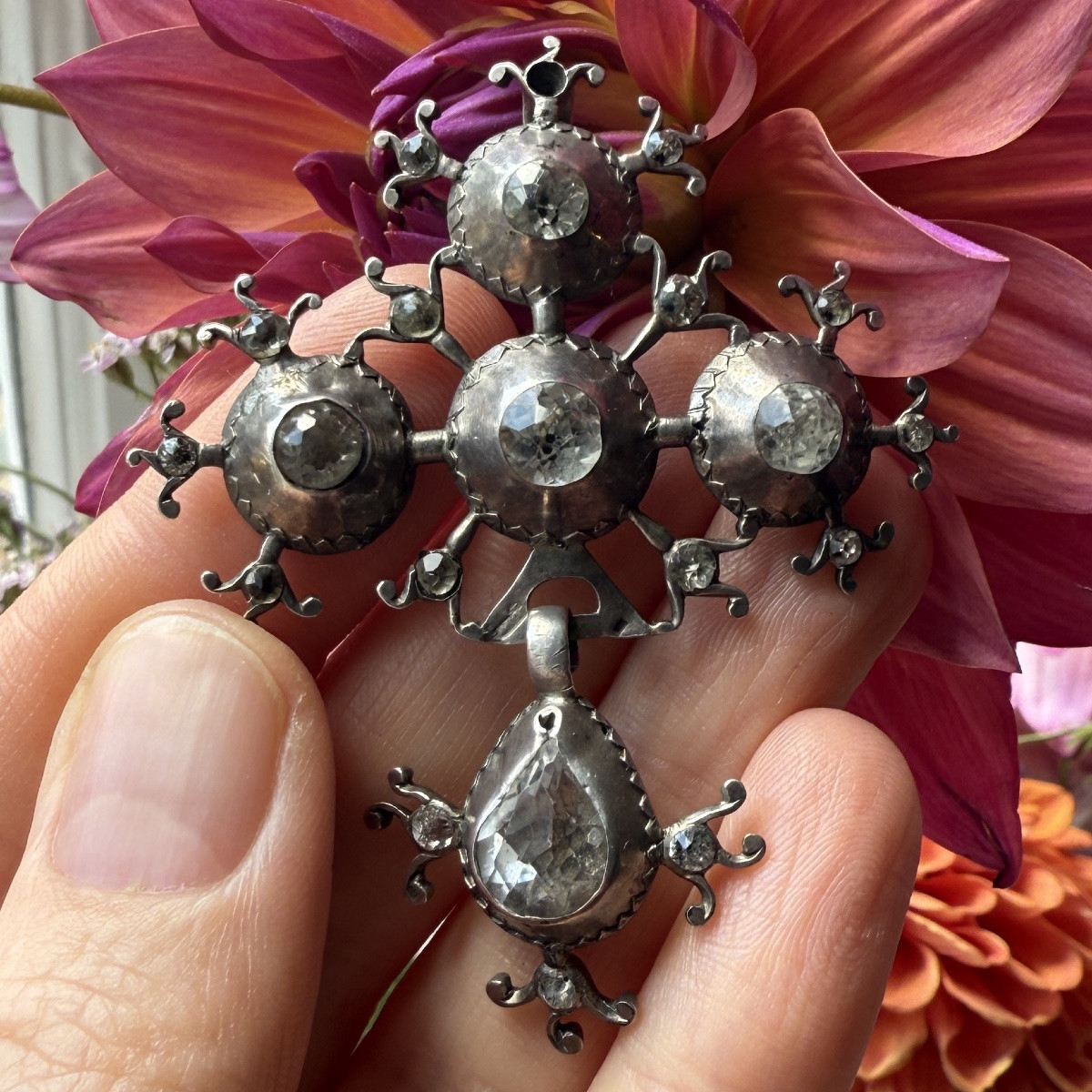
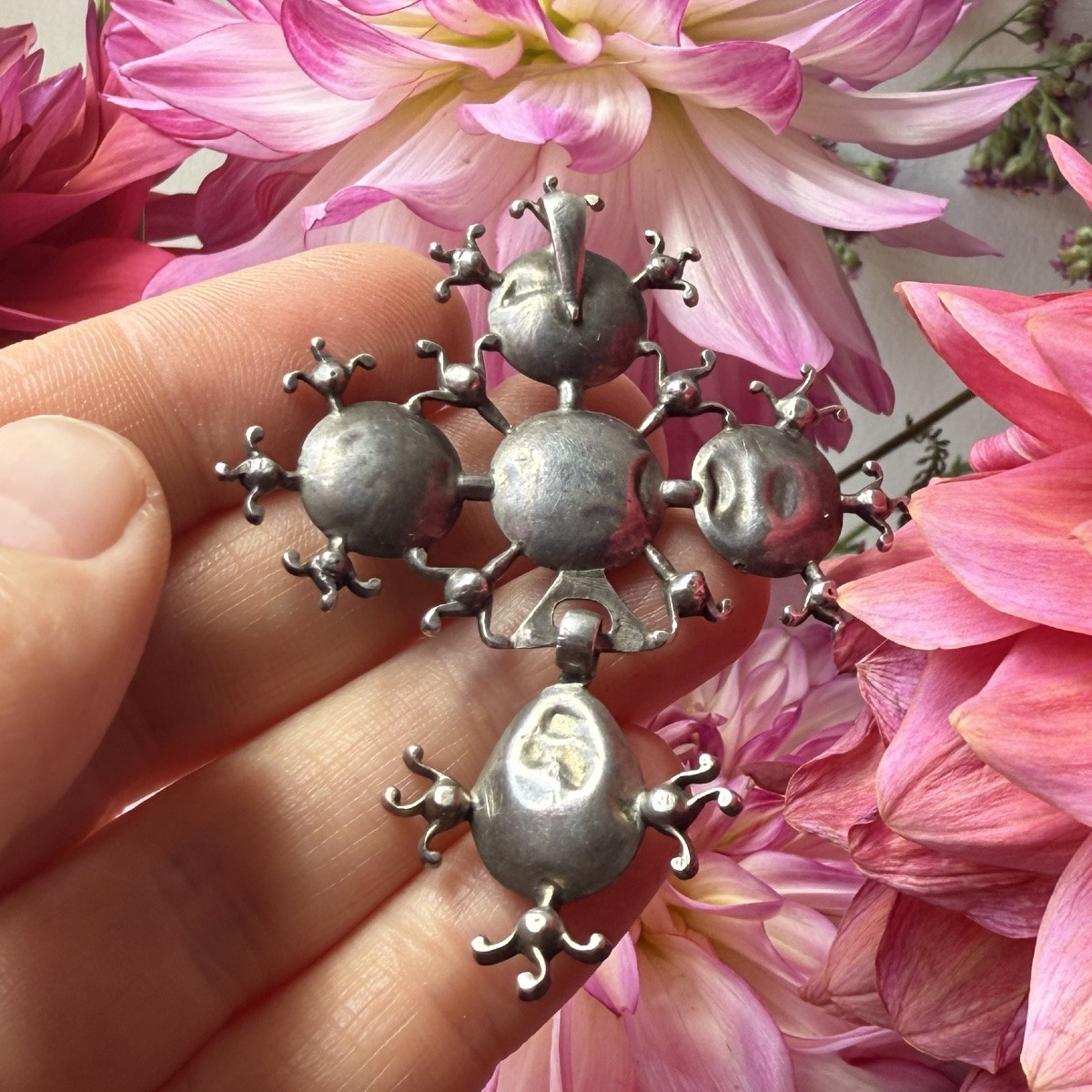
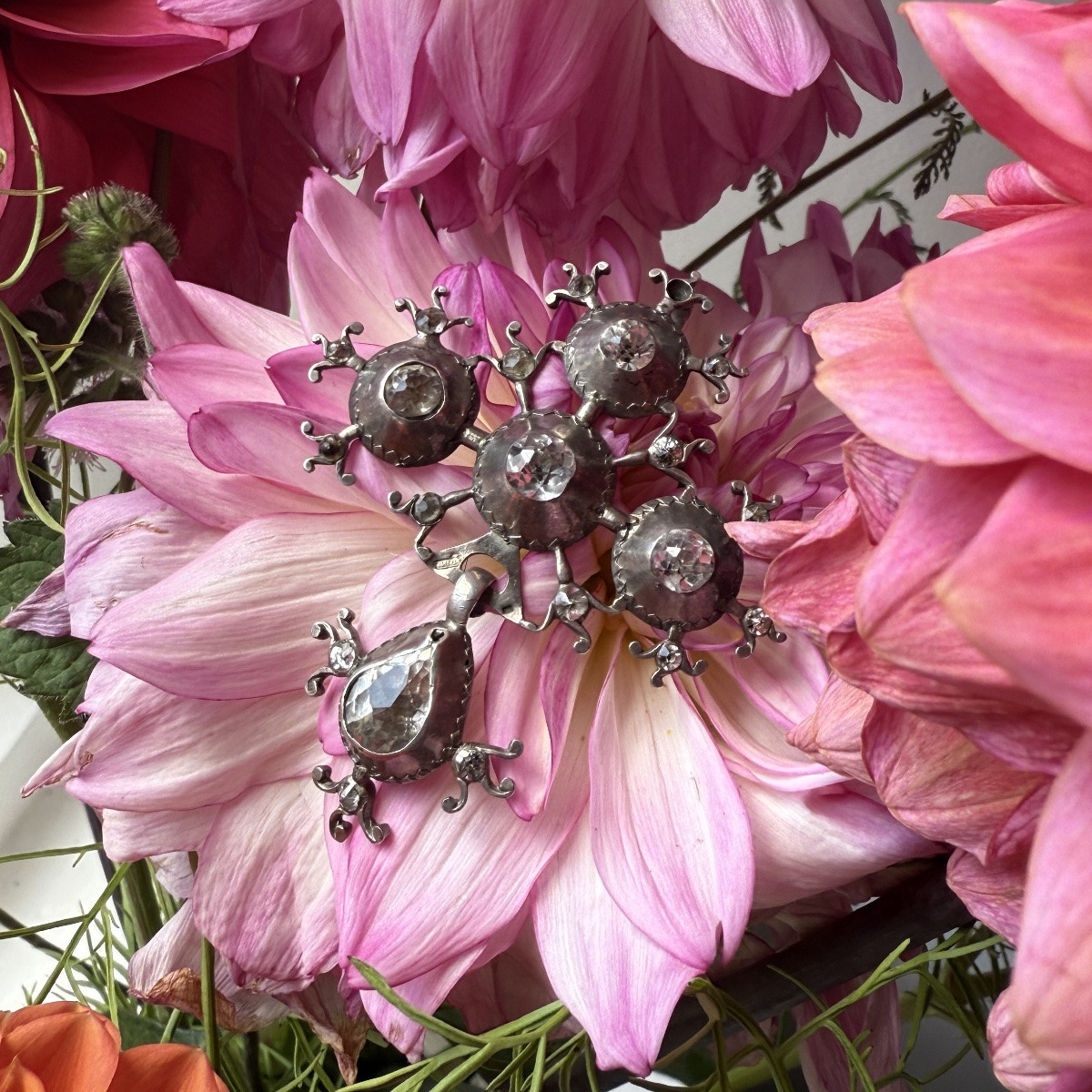
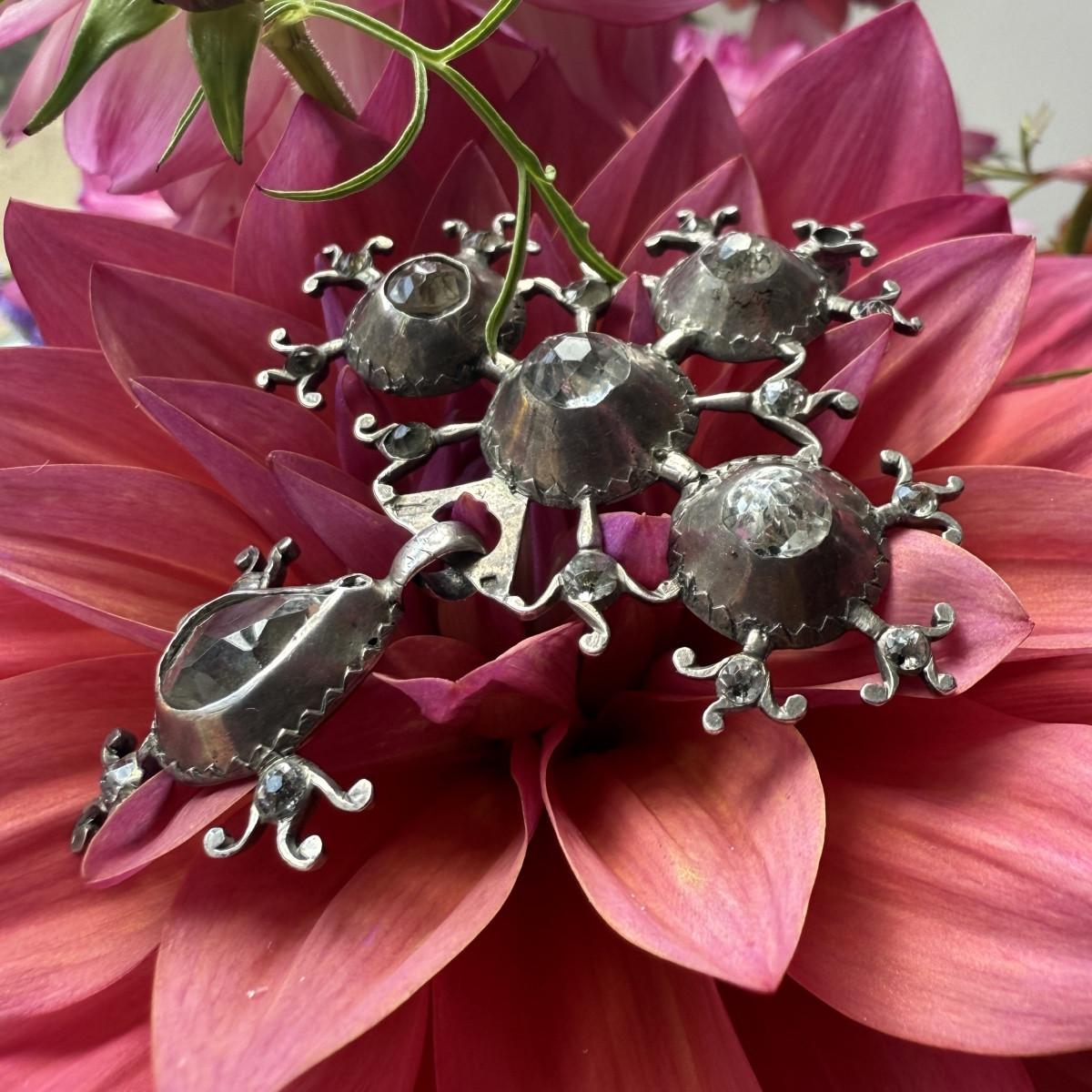
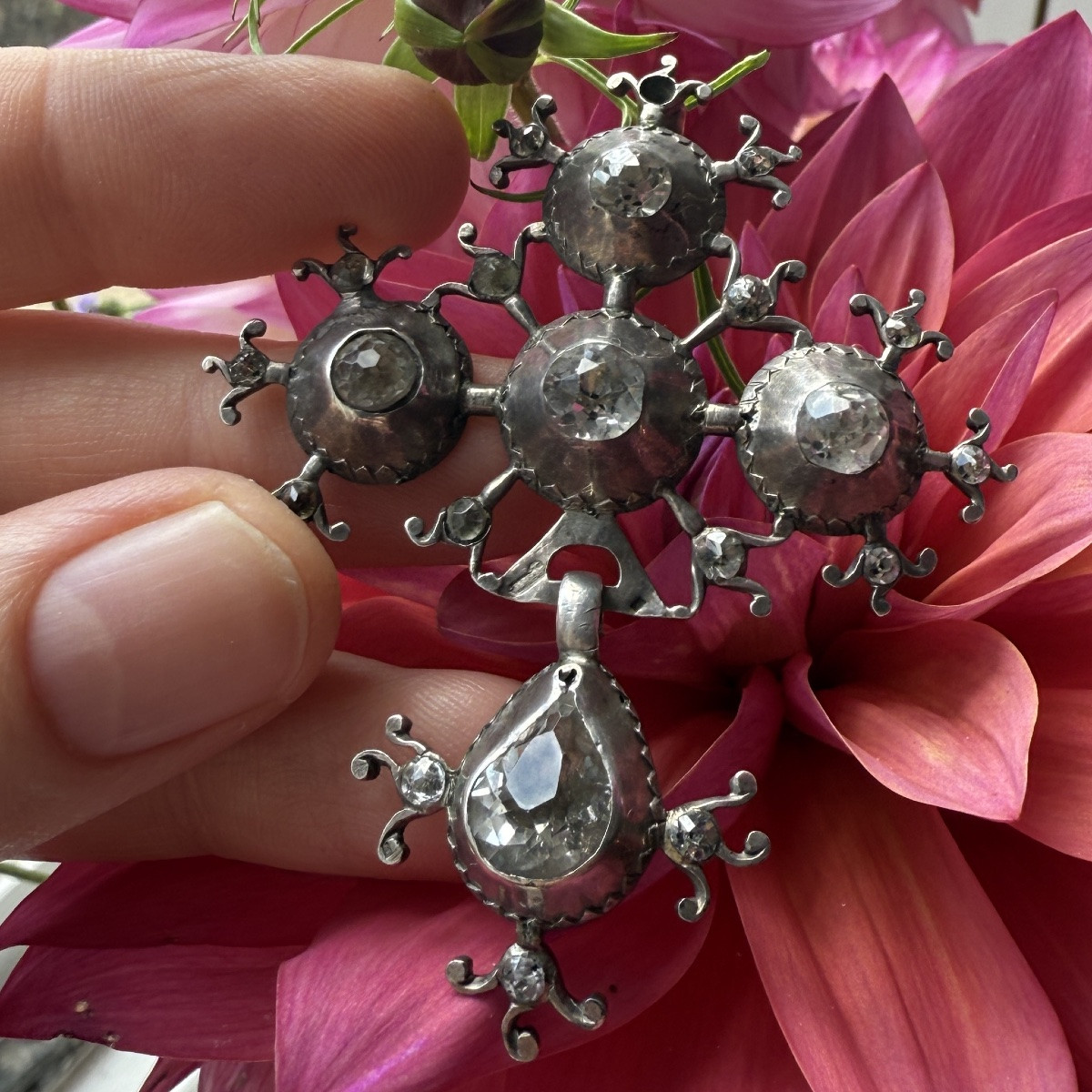
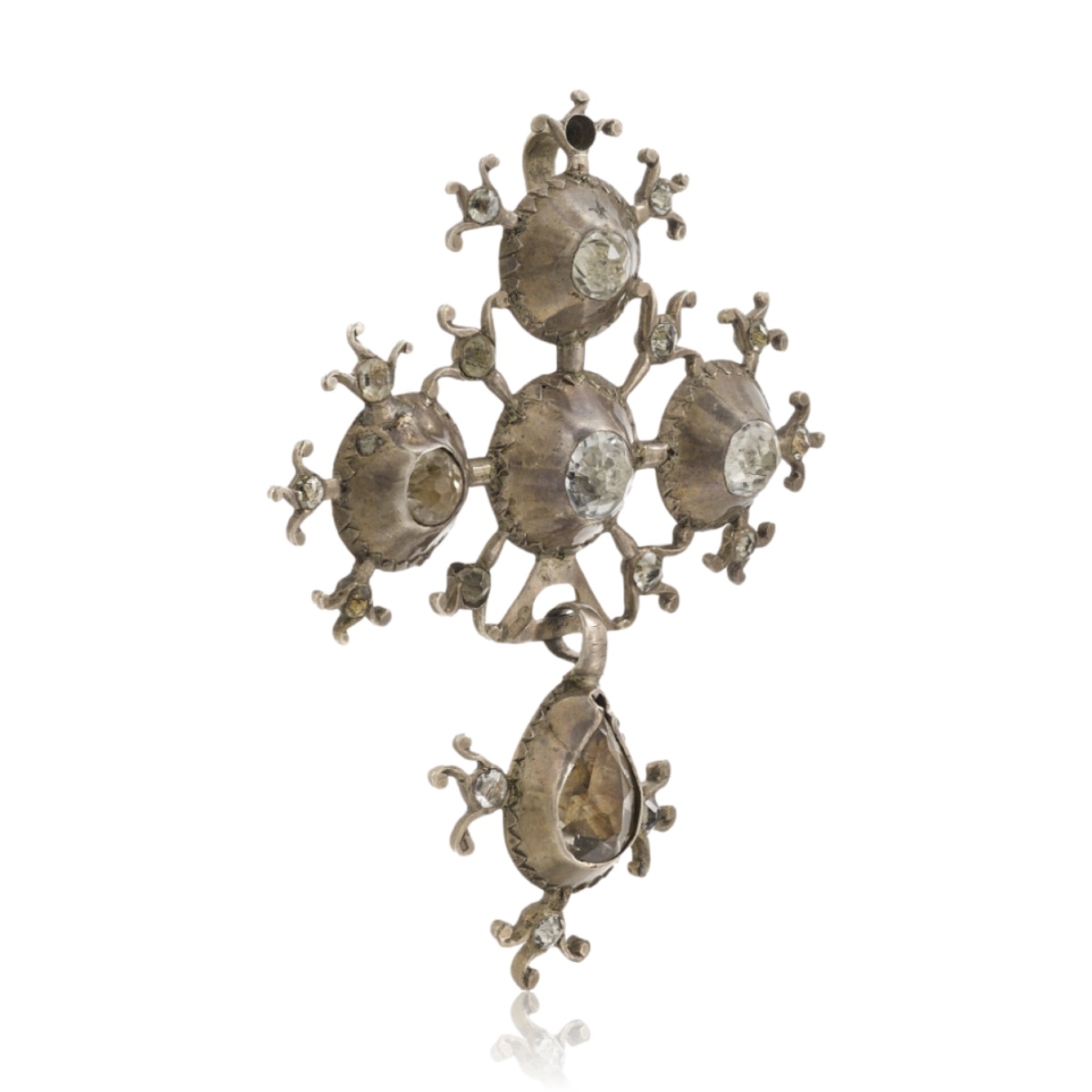
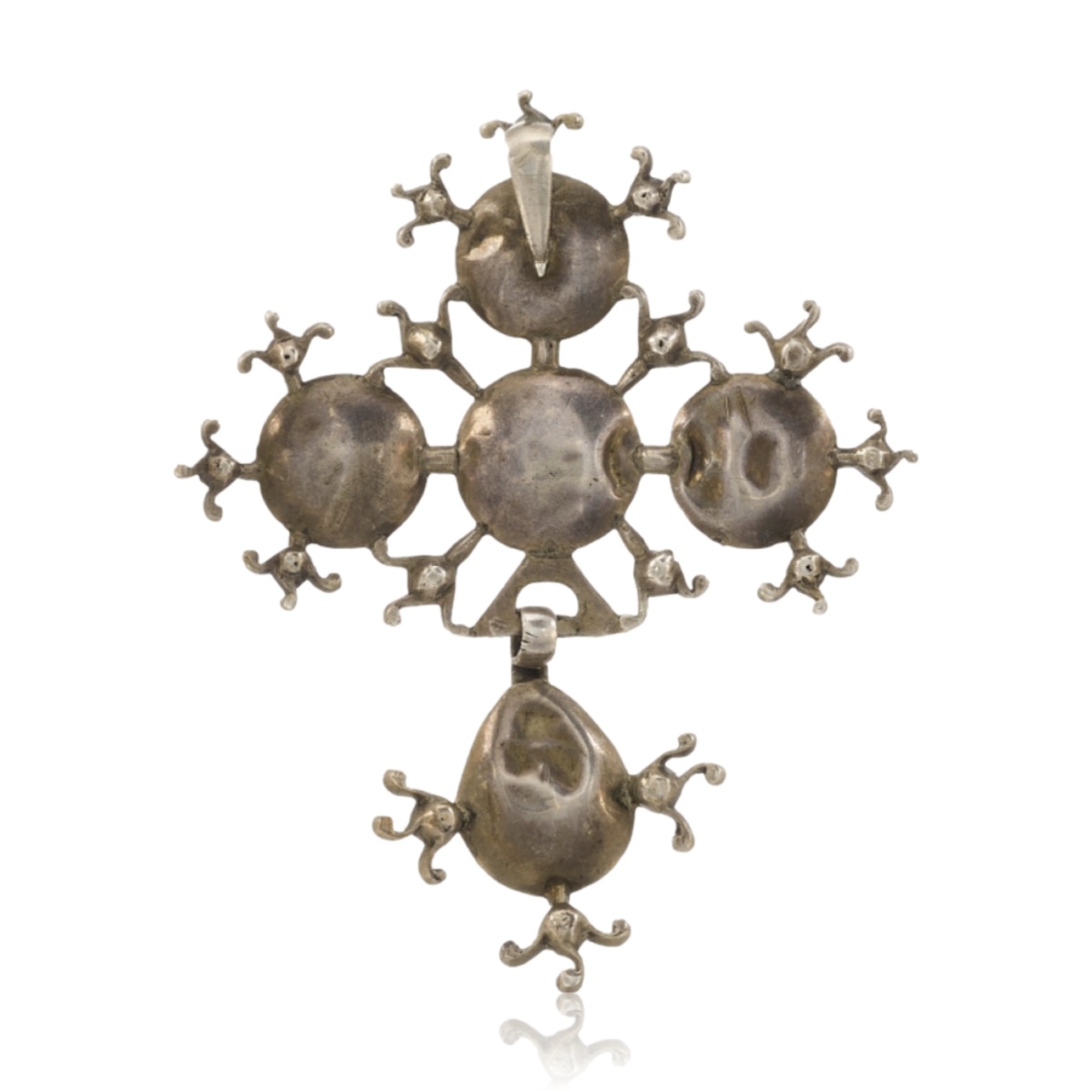


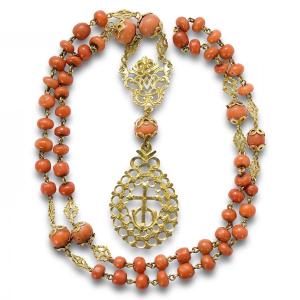




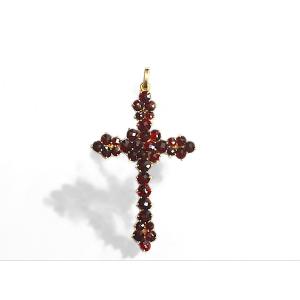



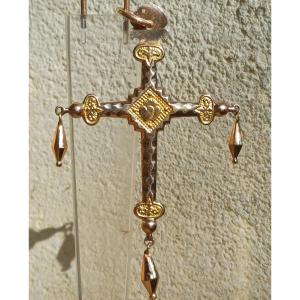



 Le Magazine de PROANTIC
Le Magazine de PROANTIC TRÉSORS Magazine
TRÉSORS Magazine Rivista Artiquariato
Rivista Artiquariato
